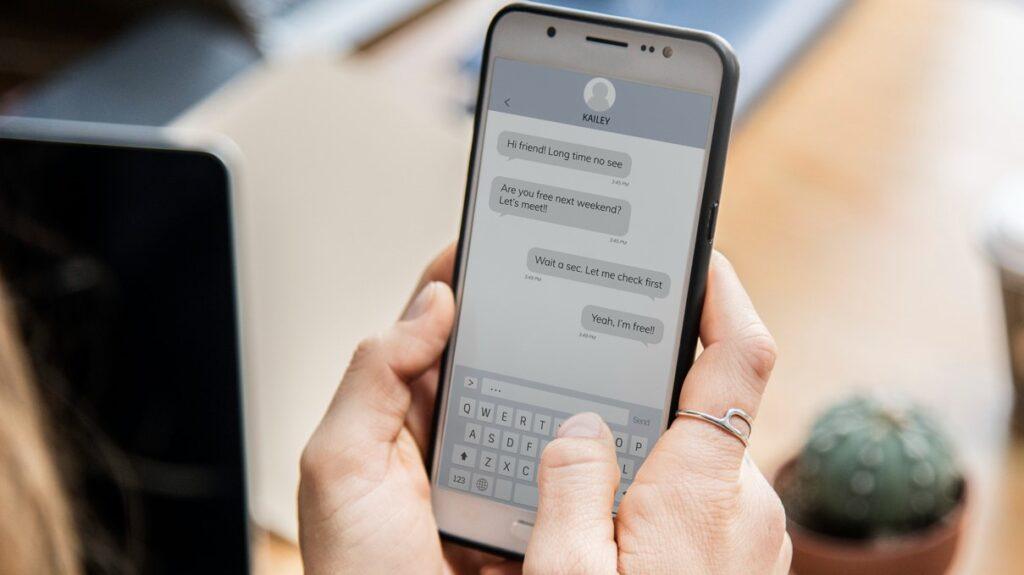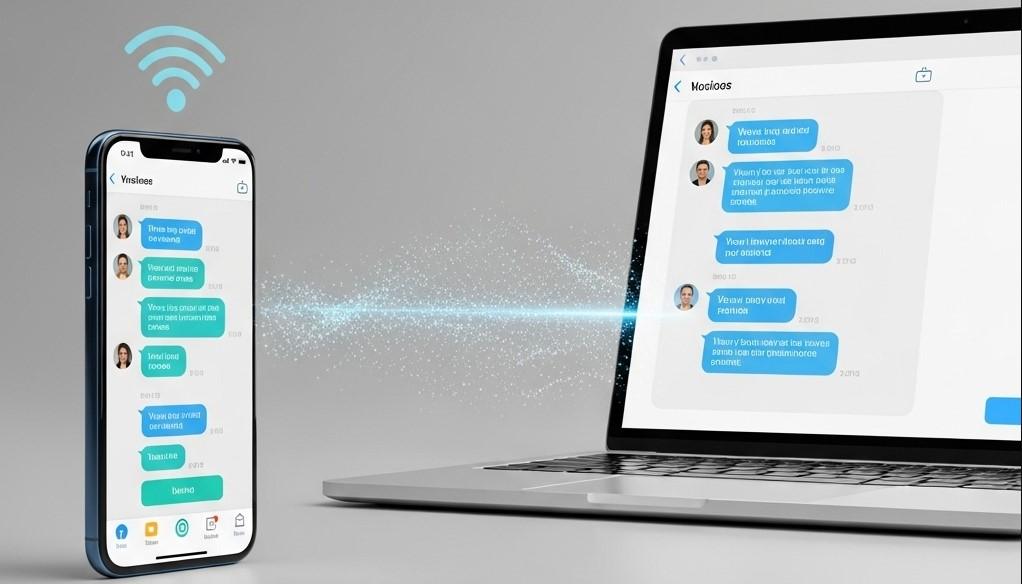“Mom, can I have my own iPhone?” If you’ve heard this question from your child, you’ve likely also wondered how to effectively monitor your child’s text messages on iPhone. As texting becomes the primary communication method for many children and teens, this digital connection exposes them to risks like cyberbullying, inappropriate content, and contact with strangers.
Many parents want to monitor their child’s iPhone messages but aren’t sure where to start or how to balance supervision with privacy. This comprehensive guide walks you through practical methods for iPhone text message monitoring while respecting your child’s growing independence.
Why Monitor Your Child’s Text Messages?
Parents monitor their children’s text messages for several important safety reasons:
- Protection from cyberbullying: According to the Cyberbullying Research Center, text messages are a common channel for peer bullying.
- Prevention of predatory contact: The National Center for Missing & Exploited Children identifies messaging apps as frequent starting points for online predators.
- Early intervention: Monitoring helps identify concerning topics like self-harm, substance use, or sexual content before they escalate.
- Teaching digital responsibility: Supervision provides opportunities to guide your child toward healthy communication habits.
Dr. Michael Rich, Director of the Digital Wellness Lab at Boston Children’s Hospital, explains: “Monitoring is less about surveillance and more about mentorship. The goal is to gradually teach children to navigate digital spaces safely on their own.”
The key is finding balance—adjusting your monitoring approach as your child demonstrates responsible digital behavior.
Legal Considerations When Monitoring Text Messages
Before implementing any monitoring solution, understand these essential legal guidelines:
- You have the legal right to monitor devices you own and pay for if your child is under 18
- State and federal privacy laws vary, particularly regarding teenagers’ privacy rights
- Creating a family technology agreement with clear expectations about monitoring provides legal and emotional protection
- Always use monitoring tools for safety purposes rather than control
Apple’s Built-in Monitoring Solutions
iOS 18 (and earlier versions) includes powerful tools to help parents monitor their child’s activity without additional software:
Family Sharing Setup
Setting up Family Sharing creates the foundation for all Apple monitoring tools:
- Open Settings on your iPhone
- Tap your name at the top
- Select Family Sharing
- Tap Invite Family and follow instructions to add your child
- Make sure to set them up as a child account (required for children under 13)
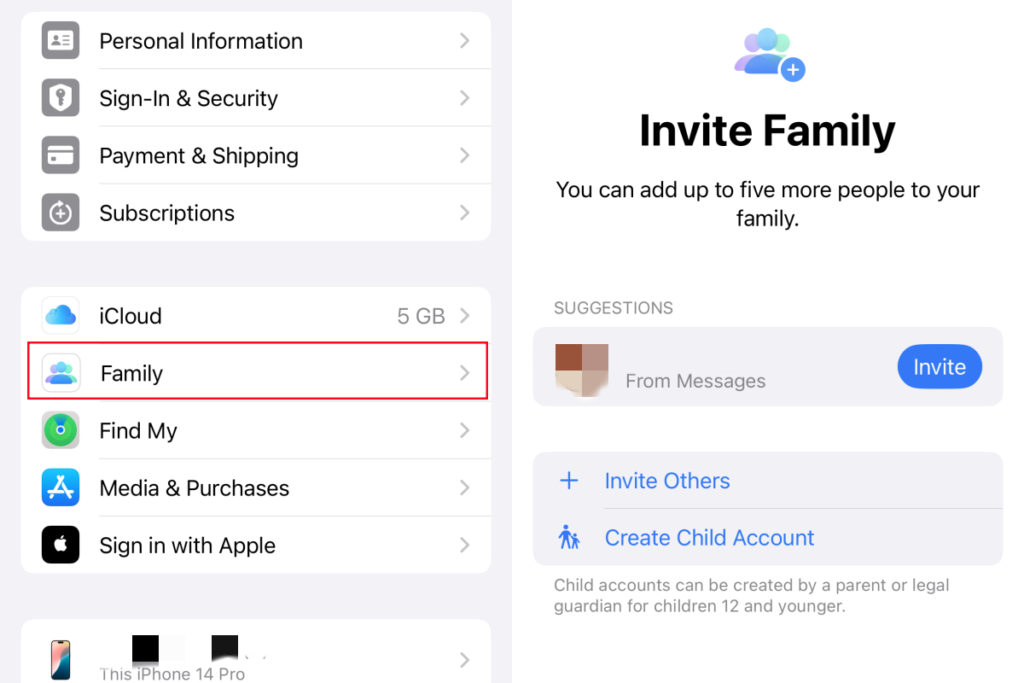
Family Sharing connects your Apple accounts in a parent-child relationship, enabling you to:
- Approve or deny app downloads and purchases
- Track your child’s location in real-time
- Manage content restrictions based on age ratings
- Review Screen Time reports showing app usage
Screen Time Features for Message Monitoring
Screen Time provides valuable insights into messaging habits:
- Go to Settings > Screen Time
- Set up Screen Time on your child’s device
- Enable Content & Privacy Restrictions
- Under Communication Limits, choose who they can message during allowed screen time and downtime
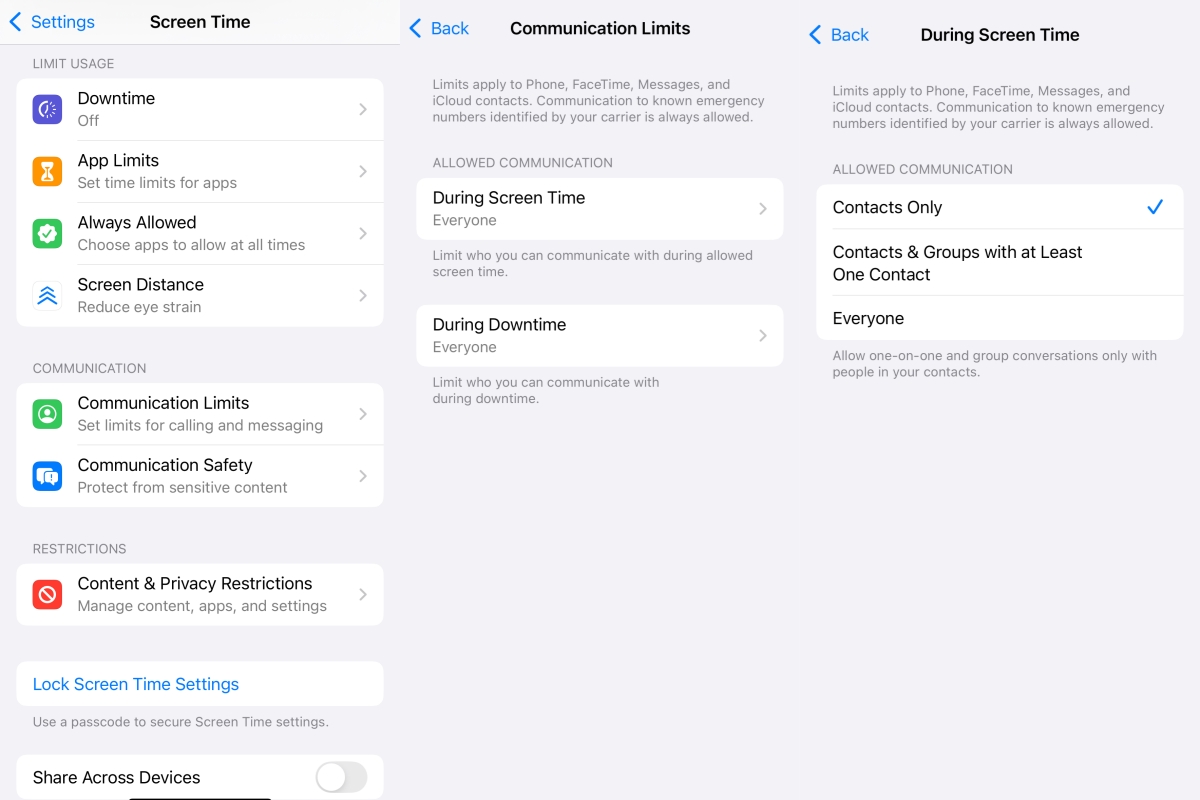
Screen Time reports show:
- Total time spent in messaging apps
- Which contacts receive the most messages
- Times of day when messaging activity peaks
- Attempts to access messaging during restricted hours
Communication Safety Features
This built-in feature helps protect kids from harmful content:
- Go to Settings > Screen Time > Content & Privacy Restrictions
- Turn on Communication Safety
- When enabled, iOS will detect and blur potentially inappropriate images in Messages
- Children receive age-appropriate guidance about why the content might be harmful
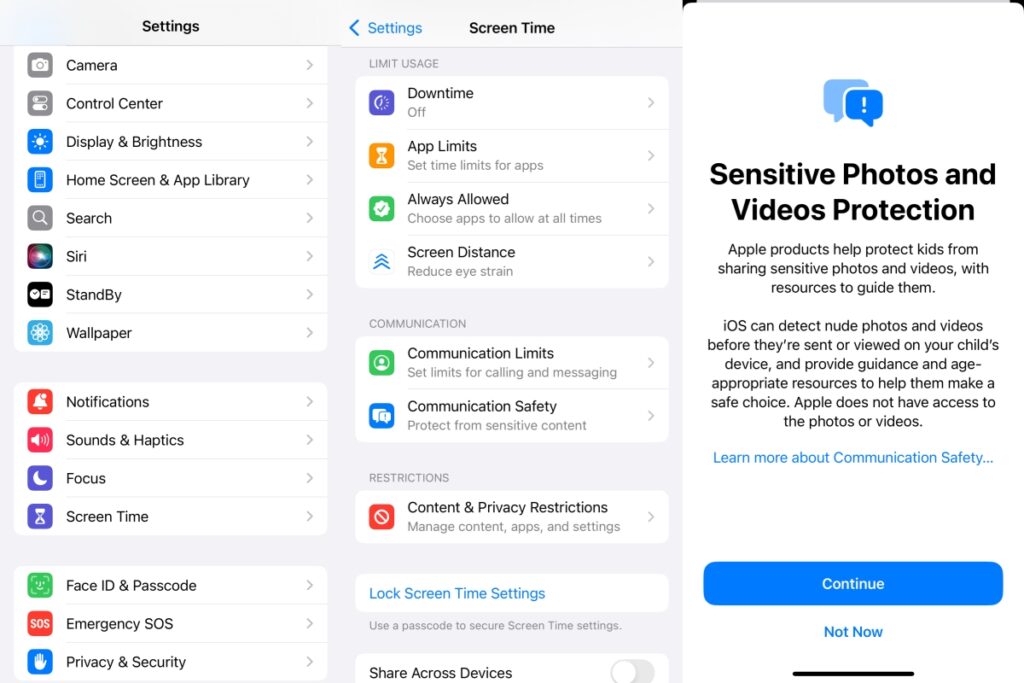
This feature uses on-device machine learning to detect concerning images without sharing message content with Apple or parents, balancing safety with age-appropriate privacy.
Using iCloud to Monitor Messages
For parents of younger children, iCloud message syncing offers a direct monitoring option:
iCloud Message Syncing Setup
Follow these steps to view your child’s iMessages on your device:
- On your child’s iPhone, go to Settings > [their name] > iCloud
- Toggle on Messages
- Sign in with the same Apple ID on your device
- Messages should now appear on both devices
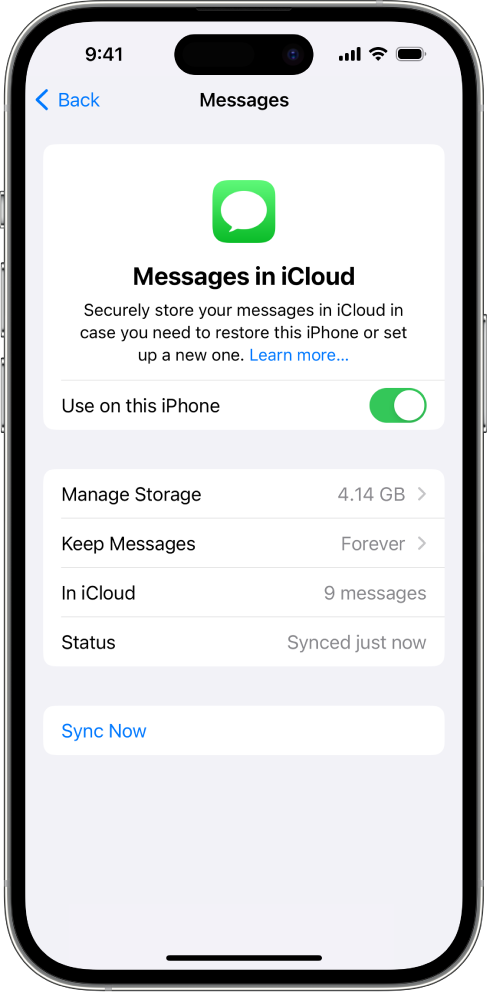
Important considerations:
- This method only works for iMessages (blue bubbles), not SMS texts (green bubbles)
- Both devices will show the same read/unread status for messages
- This approach is most appropriate for younger children (under 12)
- For teenagers, this level of monitoring may damage trust if implemented without discussion
Third-Party Monitoring App: Famisee
For more comprehensive monitoring, especially for SMS texts and third-party messaging apps, dedicated parental control software offers additional capabilities.
Famisee is a comprehensive parental monitoring solution designed specifically for parents concerned about their children’s digital safety. The app provides monitoring capabilities beyond Apple’s built-in features, including:
Key Features of Famisee
- Complete Text Message Monitoring – View incoming and outgoing messages, including deleted texts, with timestamps and contact information.
- Social Media Tracking – Monitor conversations across popular platforms like WhatsApp, Facebook Messenger, Instagram, and Snapchat.
- Location Tracking – Know your child’s whereabouts with real-time GPS location monitoring.
- Call Monitoring – Access detailed call logs including contact information, call duration, and timestamps.
- Photo and Video Monitoring – Review media files shared through messaging apps to ensure appropriate content.
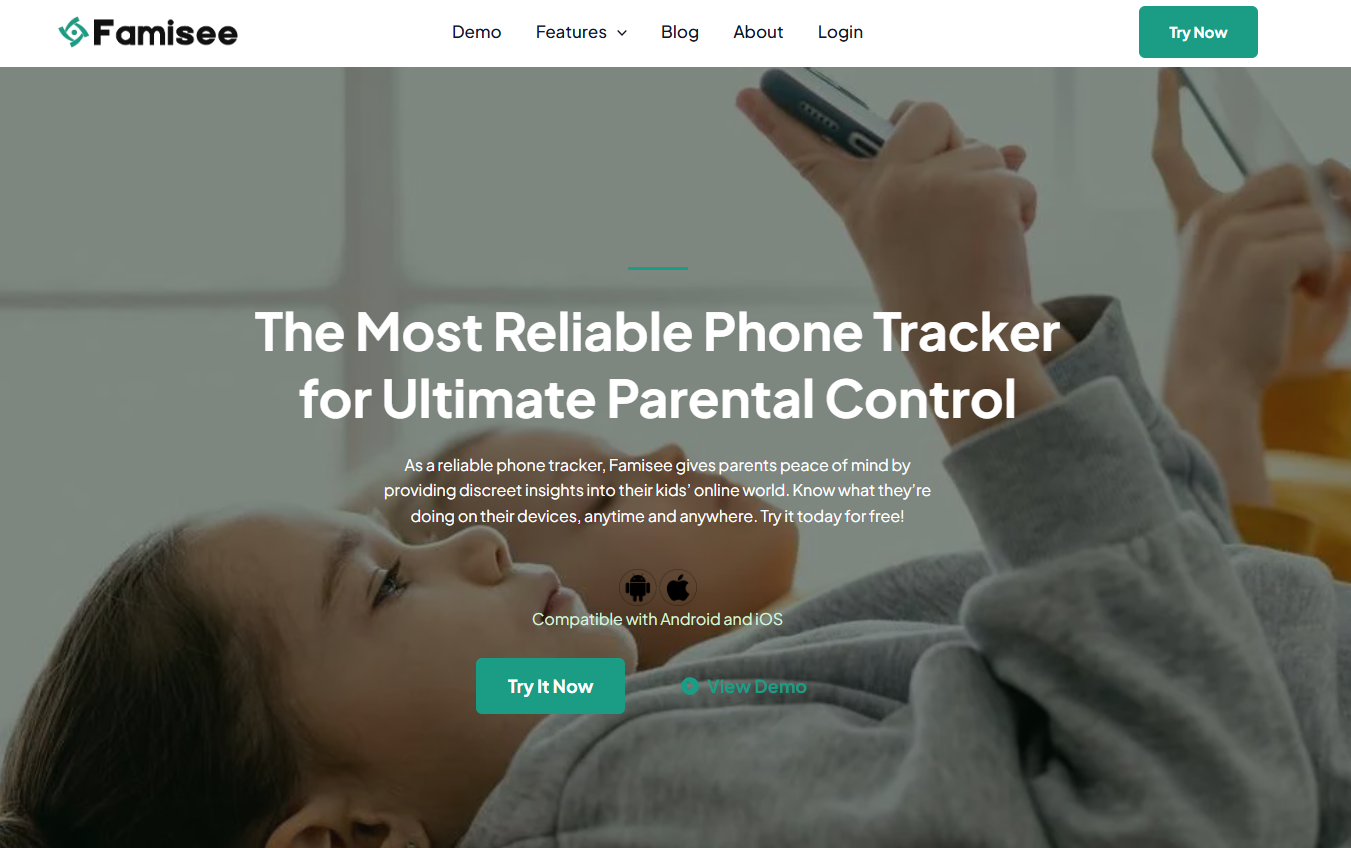
How to Set Up Famisee
Step 1: Create Your Parent Account
Visit Famisee’s official website to create a new account. Complete the registration process and select a monitoring plan. The dashboard will be your central hub for all monitoring activities.
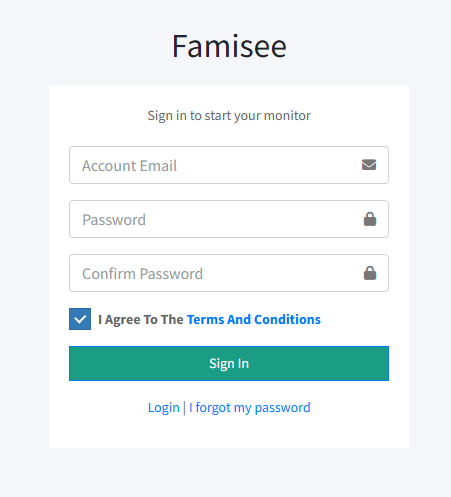
Step 2: Install Famisee on Your Child’s iPhone
For iPhone users, you need to get the iCloud ID and password of your child’s phone to access the backup data. If your child uses Android phone, you need download and install the Famisee app onto your child’s device. The installation wizard provides clear guidance for granting necessary permissions.
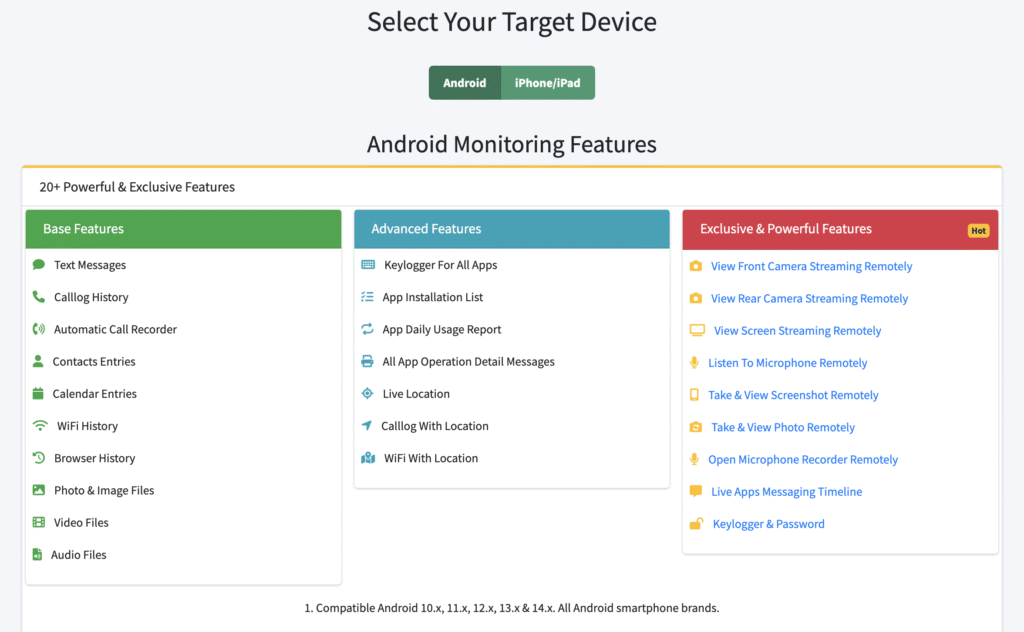
Step 3: Configure Monitoring Settings
Access your parent dashboard to customize monitoring based on your child’s age and your specific concerns. You can configure which apps and messages to monitor.
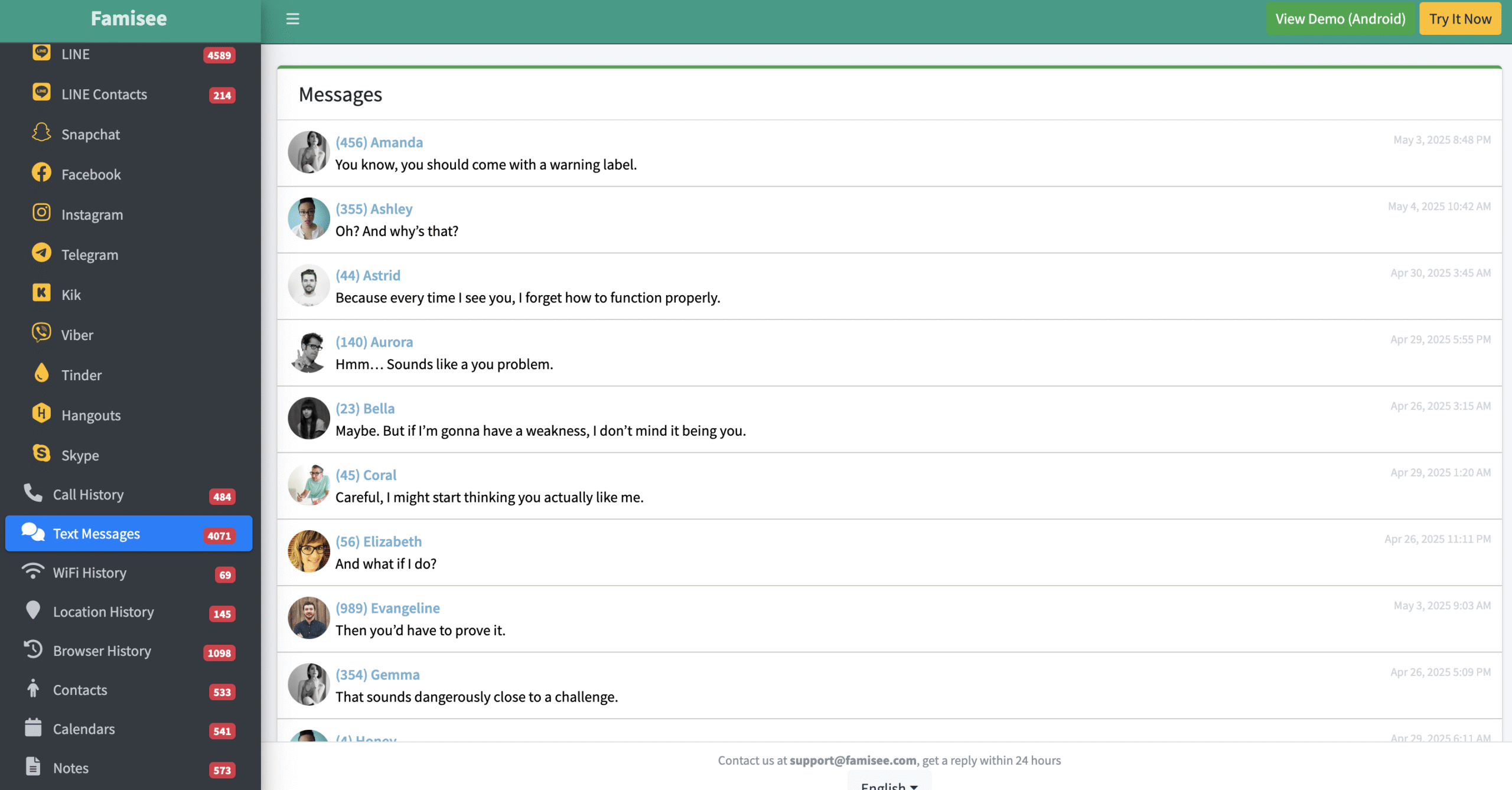
How to Balance Monitoring with Privacy
Finding the right balance between supervision and privacy requires thoughtful consideration:
Age-Appropriate Monitoring Guidelines
Child development experts recommend different approaches based on age:
| Age Range | Recommended Monitoring Approach |
|---|---|
| Under 10 | Close supervision with full access to messages |
| Ages 10-13 | Regular check-ins with some private space |
| Ages 14-16 | Periodic reviews focused on safety, not content |
| 16+ | Minimal monitoring with trust-based approach |
Create Open Communication
Digital media psychologist Dr. Pamela Rutledge, Director of the Media Psychology Research Center, emphasizes: “The most effective monitoring happens through conversation, not technology.” Follow these guidelines:
- Explain your monitoring reasons clearly, focusing on safety rather than control
- Discuss specific online dangers without creating unnecessary fear
- Establish clear rules about appropriate messaging behavior
- Review and adjust your approach as your child demonstrates responsibility
Watch for Warning Signs
Be alert to these potential indicators of messaging problems:
- Hiding their phone when you approach
- Significant mood changes after using their phone
- Declining academic performance
- Increased secrecy about messaging contacts
- Withdrawal from family activities or friends
What to Do If You Find Concerning Messages
If monitoring reveals worrying content, child psychologists recommend this approach:
- Pause before reacting – take time to process your emotions
- Seek context – messages can be easily misinterpreted without full context
- Have a calm conversation – approach your child with curiosity rather than accusations
- Get professional help if needed for serious issues like:
- Cyberbullying
- Self-harm or suicidal thoughts
- Sexual exploitation
- Substance abuse
Beyond Direct Monitoring
Building digital resilience requires more than just message monitoring:
Teach Digital Safety Skills
Equip your child with these essential skills:
- How to recognize and respond to inappropriate message requests
- Creating strong boundaries in digital conversations
- Understanding the permanent nature of digital communication
- Identifying manipulation tactics used by predators
Try this activity: Role-play different messaging scenarios with your child, letting them practice responding to uncomfortable situations in a safe environment.
Establish Healthy Device Routines
Create family habits that promote healthy technology use:
- Designate device-free times and zones in your home
- Keep charging stations in common areas rather than bedrooms
- Schedule regular family tech talks to discuss online experiences
- Model healthy technology habits yourself
Quick implementation tip: Create a “phone parking lot” charging station in your kitchen where all family devices stay overnight.
Progressive Independence Plan
Work with your child to create a roadmap toward digital independence:
- Beginning stage: Full parental access and regular reviews
- Intermediate stage: Periodic check-ins with increasing privacy
- Advanced stage: Minimal monitoring with trust and open communication
- Independence stage: Self-monitoring with occasional parental guidance
Frequently Asked Questions
Conclusion
Keeping your child safe in the digital world requires finding the right balance between monitoring iPhone messages and respecting growing independence. Apple’s built-in features provide basic oversight, while solutions like Famisee offer more comprehensive monitoring options.
Remember that technology is just one component of digital safety. Open conversations about online behavior, teaching good digital habits, and building trust with your child are equally important parts of the process.
As Dr. Devorah Heitner, author of “Screenwise: Helping Kids Thrive in Their Digital World” and founder of Raising Digital Natives, notes: “The goal isn’t to spy on our kids but to mentor them toward becoming responsible digital citizens who can eventually monitor themselves.”
As a high school counselor and mother of three, I witnessed how digital distractions impact teenagers’ wellbeing. After discovering Famisee’s effective approach to online safety, I joined their creative team to help families establish healthy technology habits while protecting children in the digital world.

